Biography
Often described as the first postmodern artist, Robert Rauschenberg was a protean innovator whose work in painting, photography, sculpture, performance, and printmaking helped establish the ongoing concerns of contemporary art. SFMOMA’s extensive holdings of works by the artist serve as an anchor for the museum’s ongoing exploration of postwar art and are the subject of a special compendium of research, the Rauschenberg Research Project.
Born in Port Arthur, Texas, Rauschenberg served in the United States Navy from 1942 to 1945 before studying art, first at the Kansas City Art Institute in 1947–48, then briefly in Paris, at the Académie Julian, in the summer of 1948. That fall he enrolled at Black Mountain College in North Carolina in order to study with Josef Albers (1888–1976), the renowned Bauhaus teacher, designer, and painter. Rauschenberg moved to New York City in fall 1949 and enrolled at the Art Students League, where he took classes intermittently through 1952. During this period he took time to return to Black Mountain for several shorter terms of study. His experiences and the friendships he formed there deeply influenced the improvisational use of materials and collaborative strategies that would define his career. Two of Rauschenberg’s most significant collaborators were composer John Cage (1912–1992) and dancer and choreographer Merce Cunningham (1919–2009), who taught at Black Mountain in the summer of 1952. Following their time together at the school, the three men engaged in a robust artistic and intellectual cross-fertilization that would fuel Rauschenberg’s work well into the following decade.
In fall 1952, Rauschenberg spent six months traveling in Italy and North Africa with fellow artist Cy Twombly (1928–2011). Back in New York, immersed in the circle of artists known as the New York School and with Cage and Cunningham’s avant-garde influence as a foil, Rauschenberg explored many of the central ideas of Abstract Expressionism, both acknowledging and transgressing the movement’s emphasis on gesture, individualism, action, and direct expression through paint. A period of vigorous experimentation in 1953 culminated in two of his most controversial, now iconic works: Erased de Kooning Drawing and Automobile Tire Print (both 1953). His best known body of work, the Combines (1953–64), paired representational elements—such as magazine and newspaper clippings, fragments of clothing, and construction debris and other items gathered in the streets of New York—with compositional strategies explored by the Abstract Expressionists. Blurring the boundaries between painting, sculpture, and collage, these works earned Rauschenberg international acclaim by the mid-1960s.
Rauschenberg’s impulse to merge media and spheres of artistic activity propelled him into the realm of experimental dance and theater. He designed costumes, lighting, and sets for the Merce Cunningham Dance Company from 1954 to 1964, and in 1963 he began choreographing and performing in works of his own invention. His interest in collaborating with scientists and engineers led him to cofound Experiments in Art and Technology (E.A.T.), an organization that fostered such partnerships, in 1967. The 1960s also saw Rauschenberg becoming increasingly active politically, with particular emphasis on global humanitarian and environmental issues. At the end of the decade, he moved permanently to Captiva Island, Florida, prompting a radical change in his work as he turned temporarily to simple materials such as paper, cardboard, and pencil, partly in response to the spare resources of his new island home.
With his move to Captiva Island, Rauschenberg expanded his studio’s specialized capabilities and support system of assistants and technical collaborators, building an environment that fed his appetite for experimentation. Areas dedicated to lithography, metalworking, painting, silkscreening, and eventually, digital printing were built during the 1970s and 1980s, giving him free reign to pursue a vast range of media and processes. He continued to mix art materials and disciplines in provocative ways, with an increasingly global frame of reference. His intense engagement with cultural and social issues led him to organize the Rauschenberg Overseas Culture Interchange from 1984 to 1991, an unprecedented project that took him to countries such as Tibet, Cuba, and China and sought to create social connections and bridge political differences.
The staggering breadth and diversity of Rauschenberg’s oeuvre make it difficult to summarize. His work has been described variously as a precursor to Pop art, Minimalism, process art, Conceptualism, and performance, testifying to the revolutionary effects that his cross-disciplinary and iconoclastic approach had on the field of American art in the postwar period.
Works in the Collection
-
 Robert RauschenbergQuiet House—Black Mountain1949, printed ca. 1990
Robert RauschenbergQuiet House—Black Mountain1949, printed ca. 1990 -
 Robert RauschenbergMother of Godca. 1950
Robert RauschenbergMother of Godca. 1950 -
Robert RauschenbergUntitled [glossy black painting]ca. 1951
-
 Robert RauschenbergWhite Painting [three panel]1951
Robert RauschenbergWhite Painting [three panel]1951 -
Robert RauschenbergPostcard Self-Portrait, Black Mountain (II)1952; printed ca. 1980
-
 Robert RauschenbergCy + Roman Steps (I–V)1952, printed ca. 1997
Robert RauschenbergCy + Roman Steps (I–V)1952, printed ca. 1997 -
 Robert RauschenbergUntitled [black painting with portal form]1952–53
Robert RauschenbergUntitled [black painting with portal form]1952–53 -
 Robert RauschenbergUntitled (Elemental Sculpture) [steel flange and stone]ca. 1953
Robert RauschenbergUntitled (Elemental Sculpture) [steel flange and stone]ca. 1953 -
Robert RauschenbergAutomobile Tire Print1953
-
 Robert RauschenbergMerce1953, printed 1981
Robert RauschenbergMerce1953, printed 1981 -
 Robert RauschenbergErased de Kooning Drawing1953
Robert RauschenbergErased de Kooning Drawing1953 -
 Robert RauschenbergCollection1954/1955
Robert RauschenbergCollection1954/1955 -
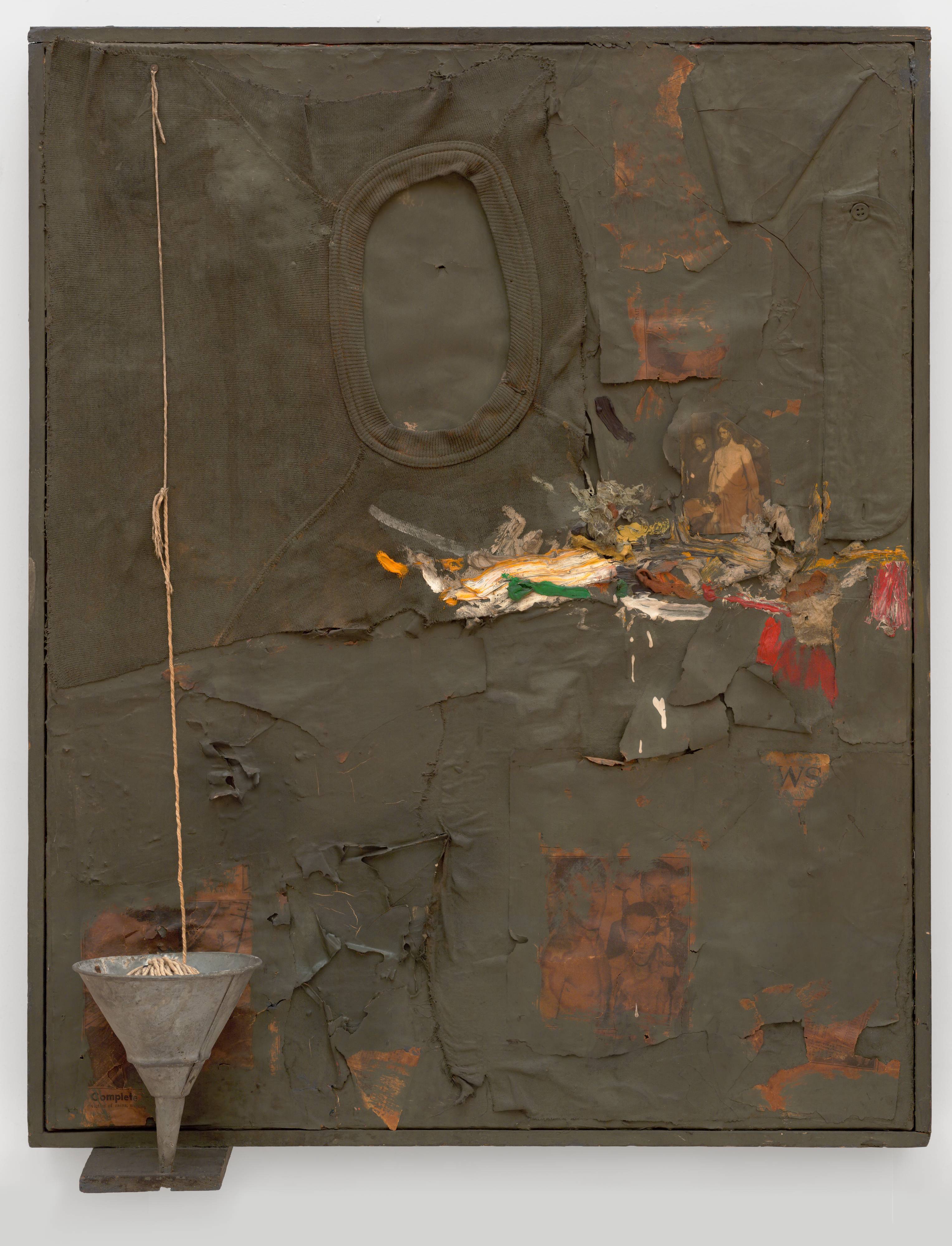 Robert RauschenbergUntitledca. 1955
Robert RauschenbergUntitledca. 1955 -
 Robert RauschenbergJasper—Studio N.Y.C.1958, printed 1981
Robert RauschenbergJasper—Studio N.Y.C.1958, printed 1981 -
 Robert RauschenbergTrophy IV (for John Cage)1961
Robert RauschenbergTrophy IV (for John Cage)1961 -
 Robert RauschenbergScanning1963
Robert RauschenbergScanning1963 -
 Robert RauschenbergFront Roll1964
Robert RauschenbergFront Roll1964 -
 Robert RauschenbergSleep for Yvonne Rainer1965
Robert RauschenbergSleep for Yvonne Rainer1965 -
Robert RauschenbergAutobiography1968
-
 Robert RauschenbergHorn (Stoned Moon)1969
Robert RauschenbergHorn (Stoned Moon)1969 -
 Robert RauschenbergFuse (Stoned Moon)1969
Robert RauschenbergFuse (Stoned Moon)1969 -
 Robert RauschenbergSky Garden (Stoned Moon)1969
Robert RauschenbergSky Garden (Stoned Moon)1969 -
 Robert RauschenbergPost (Stoned Moon)1969
Robert RauschenbergPost (Stoned Moon)1969 -
 Robert RauschenbergBanner (Stoned Moon)1969
Robert RauschenbergBanner (Stoned Moon)1969 -
 Robert RauschenbergMedallion (Stoned Moon)1969
Robert RauschenbergMedallion (Stoned Moon)1969 -
 Robert RauschenbergSky Rite (Stoned Moon)1969
Robert RauschenbergSky Rite (Stoned Moon)1969 -
 Robert RauschenbergSack (Stoned Moon)1969
Robert RauschenbergSack (Stoned Moon)1969 -
 Robert RauschenbergTrust Zone (Stoned Moon)1969
Robert RauschenbergTrust Zone (Stoned Moon)1969 -
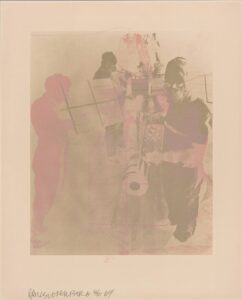 Robert RauschenbergShell (Stoned Moon)1969
Robert RauschenbergShell (Stoned Moon)1969 -
 Robert RauschenbergArena II (Stoned Moon)1969
Robert RauschenbergArena II (Stoned Moon)1969 -
Robert RauschenbergEarth Tie (Stoned Moon)1969
-
 Robert RauschenbergSky Hook (Stoned Moon)1969
Robert RauschenbergSky Hook (Stoned Moon)1969 -
 Robert RauschenbergMarsh (Stoned Moon)1969
Robert RauschenbergMarsh (Stoned Moon)1969 -
 Robert RauschenbergBrake (Stoned Moon)1969
Robert RauschenbergBrake (Stoned Moon)1969 -
 Robert RauschenbergTilt (Stoned Moon)1969
Robert RauschenbergTilt (Stoned Moon)1969 -
 Robert RauschenbergRack (Stoned Moon)1969
Robert RauschenbergRack (Stoned Moon)1969 -
 Robert RauschenbergMoon Rose (Stoned Moon)1969
Robert RauschenbergMoon Rose (Stoned Moon)1969 -
 Robert RauschenbergStoned Moon poster1969
Robert RauschenbergStoned Moon poster1969 -
 Robert RauschenbergSpore (Stoned Moon)1969
Robert RauschenbergSpore (Stoned Moon)1969 -
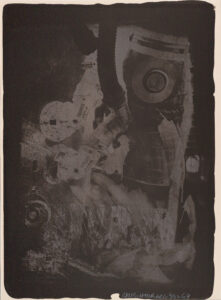 Robert RauschenbergEarth Crust (Stoned Moon)1969
Robert RauschenbergEarth Crust (Stoned Moon)1969 -
 Robert RauschenbergLoop (Stoned Moon)1969
Robert RauschenbergLoop (Stoned Moon)1969 -
Robert RauschenbergWaves (Stoned Moon)1969
-
 Robert RauschenbergAir Pocket (Stoned Moon)1970
Robert RauschenbergAir Pocket (Stoned Moon)1970 -
Robert RauschenbergEarth Day1970
-
 Robert RauschenbergWhite Walk (Stoned Moon)1970
Robert RauschenbergWhite Walk (Stoned Moon)1970 -
 Robert RauschenbergTracks (Stoned Moon)1970
Robert RauschenbergTracks (Stoned Moon)1970 -
Robert RauschenbergBait (Stoned Moon)1970
-
Robert RauschenbergHybrid (Stoned Moon)1970
-
 Robert RauschenbergStrawboss (Stoned Moon)1970
Robert RauschenbergStrawboss (Stoned Moon)1970 -
 Robert RauschenbergApe (Stoned Moon)1970
Robert RauschenbergApe (Stoned Moon)1970 -
 Robert RauschenbergRosalie/Red Cheek/Temporary Letter/Stock (Cardboard)1971
Robert RauschenbergRosalie/Red Cheek/Temporary Letter/Stock (Cardboard)1971 -
 Robert RauschenbergUntitled1973
Robert RauschenbergUntitled1973 -
Robert RauschenbergSupport1973
-
 Robert RauschenbergSketch for Monogram, 1959, from the portfolio New York Collection for Stockholm1973
Robert RauschenbergSketch for Monogram, 1959, from the portfolio New York Collection for Stockholm1973 -
 Robert RauschenbergSand (Hoarfrost Edition)1974
Robert RauschenbergSand (Hoarfrost Edition)1974 -
Robert RauschenbergPyramid Series1974
-
 Robert RauschenbergCalf Startena (Chow Bags)1977
Robert RauschenbergCalf Startena (Chow Bags)1977 -
Robert RauschenbergMink Chow (Chow Bags)1977
-
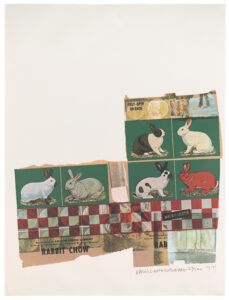 Robert RauschenbergRabbit Chow (Chow Bags)1977
Robert RauschenbergRabbit Chow (Chow Bags)1977 -
Robert RauschenbergHog Chow (Chow Bags)1977
-
 Robert RauschenbergMonkey Chow (Chow Bags)1977
Robert RauschenbergMonkey Chow (Chow Bags)1977 -
 Robert RauschenbergGoat Chow (Chow Bags)1977
Robert RauschenbergGoat Chow (Chow Bags)1977 -
 Robert RauschenbergHiccups1978
Robert RauschenbergHiccups1978 -
 Robert Rauschenberg3-83-B-25A1983
Robert Rauschenberg3-83-B-25A1983 -
 Robert RauschenbergNature (Tribute 21)1994
Robert RauschenbergNature (Tribute 21)1994 -
 Robert RauschenbergArchitecture (Tribute 21)1994
Robert RauschenbergArchitecture (Tribute 21)1994 -
Robert RauschenbergHappiness (Tribute 21)1994
-
 Robert RauschenbergEnvironment (Tribute 21)1994
Robert RauschenbergEnvironment (Tribute 21)1994 -
 Robert RauschenbergFashion (Tribute 21)1994
Robert RauschenbergFashion (Tribute 21)1994 -
 Robert RauschenbergHuman Rights (Tribute 21)1994
Robert RauschenbergHuman Rights (Tribute 21)1994 -
 Robert RauschenbergEthnic Cultures (Tribute 21)1994
Robert RauschenbergEthnic Cultures (Tribute 21)1994 -
 Robert RauschenbergLiterature (Tribute 21)1994
Robert RauschenbergLiterature (Tribute 21)1994 -
 Robert RauschenbergChildren (Tribute 21)1994
Robert RauschenbergChildren (Tribute 21)1994 -
 Robert RauschenbergArt (Tribute 21)1994
Robert RauschenbergArt (Tribute 21)1994 -
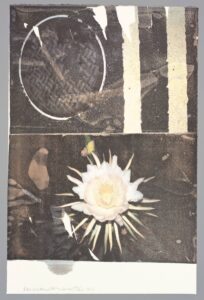 Robert RauschenbergDance (Tribute 21)1994
Robert RauschenbergDance (Tribute 21)1994 -
 Robert RauschenbergTheater (Tribute 21)1994
Robert RauschenbergTheater (Tribute 21)1994 -
 Robert RauschenbergSpace (Tribute 21)1994
Robert RauschenbergSpace (Tribute 21)1994 -
 Robert RauschenbergHealth (Tribute 21)1994
Robert RauschenbergHealth (Tribute 21)1994 -
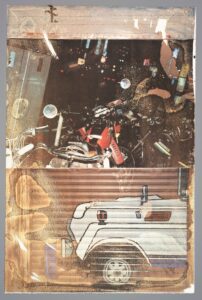 Robert RauschenbergTechnology (Tribute 21)1994
Robert RauschenbergTechnology (Tribute 21)1994 -
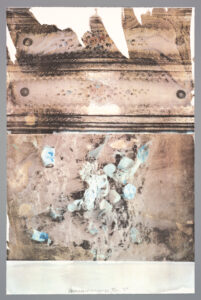 Robert RauschenbergCinema (Tribute 21)1994
Robert RauschenbergCinema (Tribute 21)1994 -
Robert RauschenbergSports (Tribute 21)1994
-
 Robert RauschenbergEducation (Tribute 21)1994
Robert RauschenbergEducation (Tribute 21)1994 -
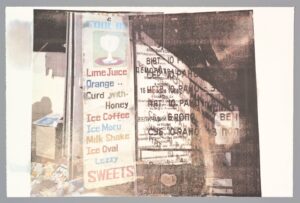 Robert RauschenbergCommunication (Tribute 21)1994
Robert RauschenbergCommunication (Tribute 21)1994 -
 Robert RauschenbergPeace (Tribute 21)1994
Robert RauschenbergPeace (Tribute 21)1994 -
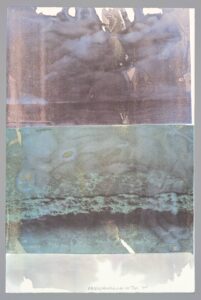 Robert RauschenbergMusic (Tribute 21)1994
Robert RauschenbergMusic (Tribute 21)1994 -
 Robert RauschenbergLabor (Tribute 21)1994
Robert RauschenbergLabor (Tribute 21)1994 -
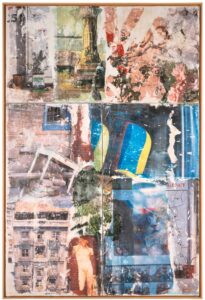 Robert RauschenbergCatastrophe (Arcadian Retreat)1996
Robert RauschenbergCatastrophe (Arcadian Retreat)1996 -
 Robert RauschenbergCaucus, from the Leo Castelli 90th Birthday Portfolio1997
Robert RauschenbergCaucus, from the Leo Castelli 90th Birthday Portfolio1997 -
 Robert RauschenbergPort of Entry [Anagram (A Pun)]1998
Robert RauschenbergPort of Entry [Anagram (A Pun)]1998
Robert Rauschenberg activates Trophy IV (for John Cage) during a 1999 interview at SFMOMA.